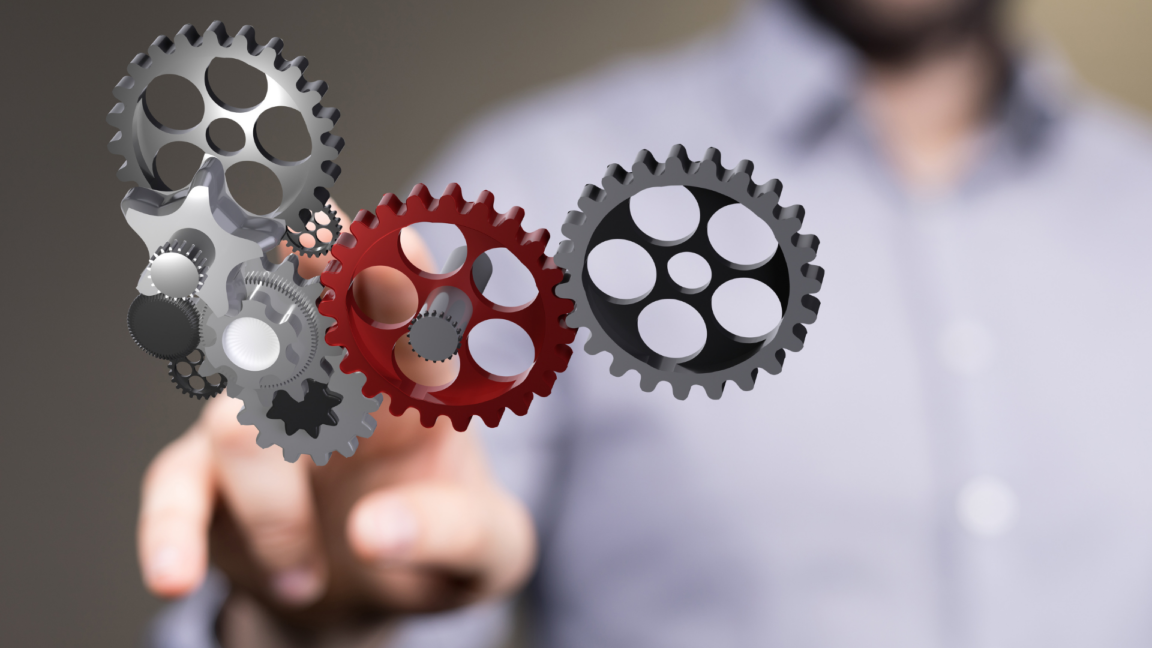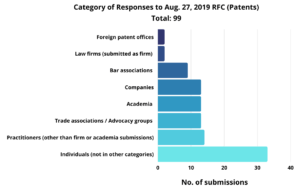
Written by: Caldwell
Who are the inventors of patents? Since George Washington signed the first patent in 1790, the United States has issued patents to people of various ages, ethnicities, and genders, with some patent inventors being as young as two when they filed[1]. The varied backgrounds of these inventors stems from the United States Patent and Trademark Office’s (“USPTO”) broad definition of an inventor, laying out an inventor to “mean[] the individual or, if a joint invention, the individuals collectively who invented or discovered the subject matter the invention.”[2] But what happens when the inventor is a machine?
This is the exact issue Dr. Stephen Thaler sought to resolve with the USPTO as well as other worldwide patent offices. On July 29, 2019, Dr. Thaler filed U.S. Patent App. Pub. No. 16/524,350 (’350 application) before the USPTO for “Devices and methods for attracting enhanced attention”.[3] As the “inventor”, Dr. Thaler listed Device for the Autonomous Bootstrapping of Unified Sentience (“DABUS”). In applications, DABUS is described as “a type of connectionist artificial intelligence” or “creativity machine” programmed as a series of neural networks “trained with general information in the field of endeavor to independently create the invention” that autonomously generated the invention at hand.[4] [5]
In response to the ’350 application, the USPTO issued a “Notice of Missing Parts” indicating that the application failed to identify each inventor by his or her legal name. This led to a series of petitions being filed arguing that DABUS was in fact the inventor because DABUS had not been created to solve any particular problem and had not been trained using any data especially relevant to the instant inventor. Rather, “it was the machine, not a person, which recognized the novelty and salience of the instant invention.”[6] Ultimately, the USPTO relied on the language of various patent statutes as well as Federal Circuit decisions to determine whether a machine could be an inventor. For example, with 35 U.S.C. §101 providing that “[w]hoever invents or discovers any new and useful process, machine, manufacture, or composition of matter,” the USPTO declared that “‘Whoever’ suggests a natural person”.[7] This resulted in the USPTO ultimately requiring that “an inventor must be a natural person” and that “U.S. patent law does not permit a machine to be named as the inventor in a patent application.”[8]
But the issue of how artificial intelligence fits into intellectual property still seems to be unsettled at the USPTO. After the filing of the ’350 application, the USPTO has requested public comments on the topics of “Patenting Artificial Intelligence Inventions” and “Intellectual Property Protection for Artificial Intelligence Innovation”.[9] The USPTO requested comment on questions such as:
- “What are the different ways that a natural person can contribute to conception of an AI invention and be eligible to be a named inventor?”
- “Do current patent laws and regulations regarding inventorship need to be revised to take into account inventions where an entity or entities other than a natural person contributed to the conception of an invention?”
- “Are there any new forms of intellectual property protections that are needed for AI inventions, such as data protection?”
- “Should a work produced by an AI algorithm or process, without the involvement of a natural person contributing expression to the resulting work, qualify as a work of authorship protectable under U.S. copyright law? Why or why not?”
- “How, if at all, does AI impact trademark law? Is the existing statutory language in the Lanham Act adequate to address the use of AI in the marketplace?”
- “Do any laws, policies, or practices need to change in order to ensure an appropriate balance between maintaining trade secrets on the one hand and obtaining patents, copyrights, or other forms of intellectual property protection related to AI on the other?”
Numerous companies, bar associations, trade associations, practitioners and individuals provided responses to these questions posed by the USPTO such as IBM, the AIPLA, Ford, IEEE USA, AUTM.[10]


Despite the numerous voices that answered the USPTO’s call, a consensus did take form regarding whether or not a machine can be an inventor. For example, the USPTO found that the majority of commenters responding to this question “reflected the view that there is no need for revising patent laws and regulations on inventorship to account for inventions in which an entity or entities other than a natural person contributed to the conception of an invention.”[11] Some of the comments received were that “conception is inherently a human activity … an entity or entities other than a natural person cannot contribute to the conception of an invention.”[12] Further, many commentors were said to take issue with the question’s premise that under the state of the art, a machine could conceive of an invention. Though some commentors suggested that “the USPTO should revisit the question when machines begin achieving AGI (i.e., when science agrees that machines can ‘think’ on their own)”, the current consensus seems to be that there is no current need for the law to change.[13]
Because the laws and capabilities of machine-learning and artificial intelligence are ever shifting, working with intellectual property counsel having experience in this field is a must. Doing so will help you and your company navigate the intersection of intellectual property and artificial intelligence and explain the effects for you and your business.
This article is the second part in a series on intellectual property strategies surrounding the artificial intelligence landscape. You can read part one in our series here: Recent Artificial Intelligence Patent Trends
[1] https://americanhistory.si.edu/blog/learning-lingo-patents-and-trademarks
[2] 35 U.S.C. § 100(f)
[3] https://caldwelllaw.com/wp-content/uploads/2021/02/16524350_22apr2020.pdf
[4] https://www.epo.org/news-events/news/2020/20200128.html
[5] https://caldwelllaw.com/wp-content/uploads/2021/02/16524350_22apr2020.pdf
[6] Id.
[7] Id.
[8] Id.
[9] https://www.federalregister.gov/documents/2019/08/27/2019-18443/request-for-comments-on-patenting-artificial-intelligence-inventions; https://www.federalregister.gov/documents/2019/10/30/2019-23638/request-for-comments-on-intellectual-property-protection-for-artificial-intelligence-innovation
[10] https://www.uspto.gov/initiatives/artificial-intelligence/notices-artificial-intelligence; https://www.uspto.gov/initiatives/artificial-intelligence/notices-artificial-intelligence-non-patent-related
[11] https://caldwelllaw.com/wp-content/uploads/2021/02/USPTO_AI-Report_2020-10-07.pdf
[12] Id.
[13] Id.